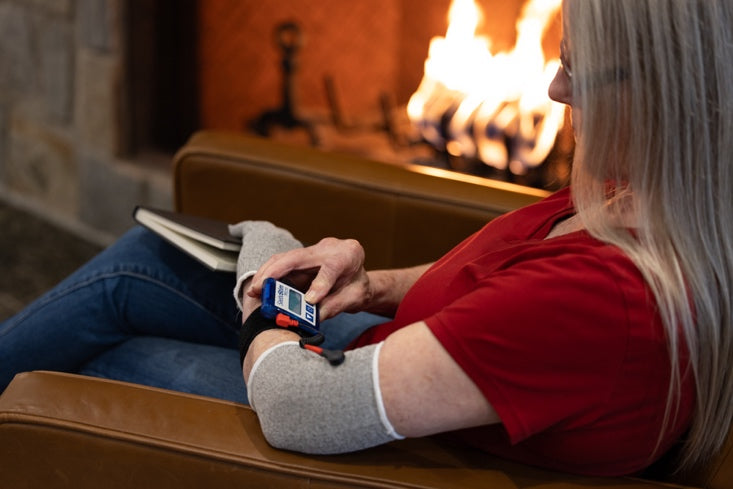Q&A – SaeboGlove or SaeboFlex

As occupational therapists, we’re constantly faced with the challenge of helping clients regain functional use of their hands following neurological injury. A question that recently came in from a fellow OT gets right to the heart of this: What is the difference between the SaeboFlex and SaeboGlove, and how do I choose for my clients?
It’s an important and common question – so let’s take a step back and explore why these two devices exist and how to determine which one is the better fit for your patient.
Understanding the Need
When we talk about “neuro clients,” we’re often referring to individuals recovering from stroke, brain injury, or spinal cord injury. One of the most frequent issues in this population is impaired finger extension – clients often can’t open their hand on their own, which severely limits functional use.
Without mechanical assistance, many clients end up relying entirely on their unaffected hand. Our job is to prevent that by facilitating grasp and release as early and often as possible.
That’s where devices like the SaeboFlex and SaeboGlove come into play. Both are designed to assist with finger extension, but they serve different needs depending on your client’s tone and level of motor control.
When to Choose the SaeboFlex
If your client has moderate to high tone or significant spasticity, the SaeboFlex is likely the better option.
- The SaeboFlex uses a rigid, spring-loaded outrigger design to mechanically open the fingers.
- It includes digicaps, which help block DIP joint flexion and provide structural support.
- The hardware is durable and provides strong resistance – ideal for clients who need more help overcoming spasticity and stiffness.
Think of it as your go-to when you're dealing with increased muscle tone and a lack of active extension.
When to Choose the SaeboGlove
If your client has low tone, flaccidity, or general weakness, the SaeboGlove might be more appropriate.
- It’s lightweight and fabric-based, offering a more subtle assist through elastic tensioners built into the glove.
- Best suited for clients with minimal to no spasticity, where the goal is to gently support weak finger extensors.
It’s an ideal solution for patients who just need a little help to complete grasp and release activities, especially if their hand is soft and lacks tone.
What If They’re Somewhere in Between?
Sometimes you’ll have a client who doesn’t clearly fall into one category or the other. In those cases, I often recommend using the SaeboGlove in combination with electrical stimulation.
I like to place electrodes on the finger extensors and use a device like the SaeboStim Pro with a trigger button. This way, when the client is ready to release an object, I can activate the stimulation to assist with extension – while they’re still wearing the glove. The pairing of mechanical assistance and neuromuscular stimulation can be incredibly effective for clients who are on the fence between the Flex and Glove.
Remember Your Clinical Roots
As therapists, we’re trained in splinting and positioning. These skills are critical when helping neuro patients regain functional movement. If your client can’t actively mobilize a joint, we need to facilitate it for them – and both the SaeboFlex and SaeboGlove are tools that help us do just that.
The key question to ask:
“If my client has spasticity and no finger extension, how am I going to position their hand and wrist so they can grasp and release?”
Answering that question thoughtfully can transform your treatment strategy – and your patient’s outcome.
No Plateau in Sight
At Saebo, we reject the notion of a “plateau.” When a patient stops progressing, it’s not because they’re out of potential. More often, it’s because we’ve run out of options. That’s on us, not them.
So the next time you’re evaluating a neuro client, consider all the tools at your disposal – because functional recovery is always possible.
No plateau in sight. Let’s keep pushing forward.
All content provided on this blog is for informational purposes only and is not intended to be a substitute for professional medical advice, diagnosis, or treatment. Always seek the advice of your physician or other qualified health providers with any questions you may have regarding a medical condition. If you think you may have a medical emergency, call your doctor or 911 immediately. Reliance on any information provided by the Saebo website is solely at your own risk.



